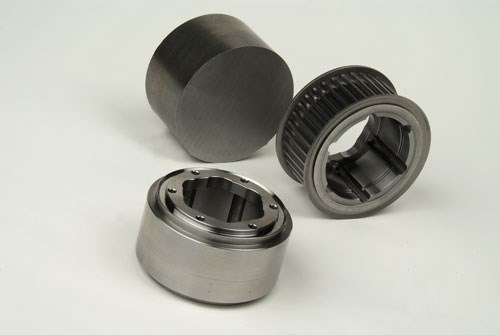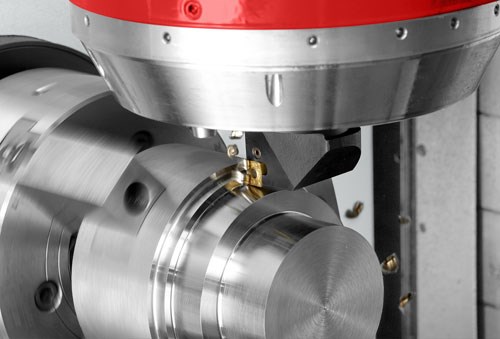When To Combine Milling And Turning
Turn/Mill technology enables users to complete a workpiece in a single handling. This article looks at some of the criteria that make application of this multi-tasking productive.
#basics
Few companies immediately invest when new technology is introduced. There are a variety of reasons for this hesitation. Often, adoption is cost prohibitive when an innovative machine is first made available. There is a level of uncertainty as to how most new technologies will perform over time.
While breakthroughs might take years to attain, they tend to be refined and improved at a much quicker rate, so those who wait will typically receive a more sophisticated product. All of these can be perfectly valid justifications for not being an early adopter. On the other hand, waiting too long to embrace progress may put a business at a substantial disadvantage. It’s a judgment call that should be evaluated periodically.
Featured Content
In the area of multitask machining, many machine shops initially took a wait-and-see approach to the technology. The combination of milling and turning functions required programmers and operators that were familiar with each type of machining.
At the beginning, the vast majority of multitask machines focused on one process, with less robust performance in the other area. Many shops wanted to evaluate the technology’s value over time before adopting it. These were understandable reservations, but their time has passed.
Today, there is an incredible diversity within the multitask machines available to shop owners. There are machines to meet any need, whether a shop is producing small parts for the medical industry, long tubes for the oil and gas industry or aerospace engine components that possess large diameters and require a short Z axis.
Multitask machines range from entry level to those that provide incredibly high levels of performance, ensuring an option for budgets of all sizes. For most manufacturers, the potential benefits of multitask machines are overwhelming.
Eliminating Risk Of Inaccuracy
As the industry has evolved, many manufacturers find themselves challenged to maintain ever-stricter levels of precision. It is fairly common to produce parts that require tolerances down to 0.001 inch. It is easy to find stand-alone milling or turning centers that can meet these demands, but that is only half the battle.
When producing parts across a combination of milling and turning centers, it can become difficult, if not impossible, to maintain high levels of accuracy. Every time a part is transferred from one machine to another, a new variable is added.
These variables add up quickly. A part of medium complexity may undergo machining processes on half a dozen machines or more. No matter how much care is exercised and how sophisticated the equipment, tolerances will always deteriorate when a part requires re-fixturing.
Multitask machines stabilize the manufacturing process by allowing parts to be cut to completion with a single setup. The inevitable imperfection introduced when completing multiple setups is eliminated. This makes it much easier to hold tight tolerances.
For manufacturers working with parts with less stringent accuracy requirements, it may seem acceptable to ignore the effect of multitask machining on precision. Before doing so, these companies need to consider the changing nature of American industry.
It is impossible to pay any attention to the news without encountering fears of manufacturing being lost to overseas competition. Opinions on the severity of this risk vary, but it can objectively be said that low-tolerance work is at a greater risk of outsourcing.
On the other hand, industries that require high accuracy, such as medical and aerospace, are experiencing significant growth in the United States. Manufacturers producing low-tolerance work today may soon find it necessary to adapt their approach to succeed.
Easing Into Automation
In recent years, many American manufacturers have found themselves faced with a diminished labor pool and shortage of skilled labor. As a result, automation has become a valuable tool for achieving growth independent of the availability of additional workers. With an automated system, productivity soars and an operator is able to produce much more with the same amount of effort.
While possible, development and integration of an automated system across multiple machines can be an extremely costly and challenging proposition. Building automation around a single machine offers a much simpler solution. This minimizes the amount of equipment needed, reduces the amount of necessary operator intervention and increases the system’s flexibility.
Pfeifer Industries of Naperville, Illinois, provides a perfect example of the efficiency made possible by automating a single machine. The two-man shop designed a manufacturing cell using one of the Mori Seiki integrated machine models with milling capabilities, a gantry loader and a Hydrogage part measurement system. A common part produced by the company previously required 3 minutes, 15 seconds of turning and 4 minutes, 8 seconds of milling with an operator transferring parts from one machine to another.
With the single-machine automation cell, Pfeifer decreased total machining time to only 5 minutes, 20 seconds per part. The increased productivity, coupled with the ability to run lights out, boosted capacity from 87 parts per day to 252 parts per day.
Most importantly for the small shop, the amount of labor required dropped dramatically. In the past, one of the shop’s two employees would need to tend to the machine constantly during operation. Today, the automation cell only requires 10 minutes of labor for every hour of production.
Many shops might not be able to achieve results as stunning as those at Pfeifer, but the basic benefits apply to most manufacturers. With accessories like a gantry loader or pallet pool, a single multitask machine can easily be turned into an automation cell that doubles or triples the quantity of parts produced per labor hour.
Flexibility And Faster Turnaround
To save money, many companies have moved away from the practice of keeping a substantial inventory of parts. Because of this, speed of delivery is often a primary concern when selecting a supplier. For manufacturers, this translates into a need to streamline production, introducing a flexibility that goes hand-in-hand with lean manufacturing.
Achieving a competitive advantage in the area of turnaround time can be difficult, if not impossible, when a part must cross many machines in its journey towards completion. Typically, when a part reaches a machine, it must sit in a queue, waiting as other jobs are completed.
When this happens at every step in the process, total process time grows dramatically. Even with the most efficient scheduling system, this type of waste exists when multiple lots of parts are vying for time on the same group of machines.
A prominent aerospace manufacturer evaluated its work flow and made a startling revelation. One specific part required 30 operations to be machined to completion.
On average, as a part moved through the shop, it waited 3 days at each station before being processed. Between the wait time and machining time, total turnaround on the part was at roughly 30 weeks. Processed in batches of 20, each part represented $15,000 of revenue.
With the value of the work-in-process exceeding the cost of integrating multitask machines, the manufacturer realized that investing in new technology was a small price to pay compared to the risk of losing the job to a shop with quicker turnaround times. After integrating multitask machines, the total number of processes and delivery time dropped significantly, allowing the shop to remain competitive.
In addition to providing quick turnaround times, significant reduction of the amount of time a part spends as work-in-process enables a high degree of flexibility. With history proving that no industry is immune from downturns, many job shops actively seek to diversify their customer base. The simplified production process resulting from multitask machining allows a manufacturer to adapt work flow much more quickly, making it easier to serve a mixed customer base.
What To Consider
As with any significant investment, there are many things to consider when making a decision about adopting multitask machining. First, a shop should consider if the cost of the technology is justified.
For shops dealing exclusively in parts that can be machined to completion with a single setup on a milling or turning center, multitask machining might not provide much of a gain. Most other manufacturers will benefit from the technology, and it is merely a question of finding the best way to do so.
The nature of the parts being produced plays an important role in determining what variety of multitask machining is best for a shop. For parts requiring primarily turning with only simple milling or drilling operations, a turning center with live tooling is likely the ideal option.
On the other hand, parts requiring significant milling and turning are better served by a machine that incorporates both processes without compromising one for the other. Shops should also keep in mind that high-speed and five-axis machining will only be possible on a true mill-turn center.
When selecting a specific model of machine, a shop should consider the specifications and requirements of potential jobs as well as existing ones. Multitask technology has now been around long enough that machine builders should be able to provide details of customers who have successfully benefited from their machines.
Reputation is not enough to justify a purchase decision, but it should definitely be considered throughout the process. Many multitask machines incorporate design features and innovations that were initially developed for milling or turning centers. Looking at the history of those capabilities in other machines can provide some indication of what to expect of them in a new context.
Whether looking for lower costs, higher productivity, tighter tolerances, faster delivery or increased capacity, multitask machining can help a shop achieve its goals. The technology has proven itself, and companies that fail to take advantage of its benefits will likely find themselves at a disadvantage to the competition.
RELATED CONTENT
-
Making Waves with Lathe Automation
After years of relying on an extensive machining cell for part production, this marine equipment manufacturer has now reduced part handling and improved quality through use of single-setup lathes and automated loading and unloading.
-
Burr-Free Micro Thread Whirling
Threading is usually the last operation when machining components, which is why the process needs to be reliable and highly precise. DC Swiss has developed an internal thread whirler, which leaves micro threads burr-free, even in demanding, hard-to-machine materials.
-
Custom Tooling, Workholding Help Whip Rotors Into Shape
Whipple Superchargers uses unique form tools and dead-length-collet workholding for its B-axis turn-mill enabling it to create more accurate rotors for its brand of engine power-adders.


.jpg;width=550;quality=60)







